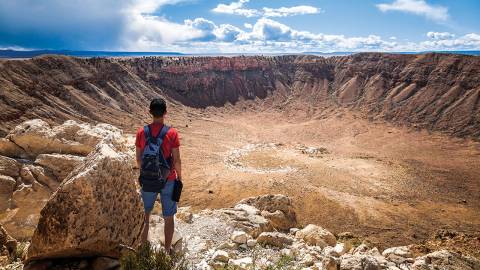Astrotourism in Flagstaff: A Gateway to the Stars and Beyond
Prepare for an adventure of cosmic proportions!
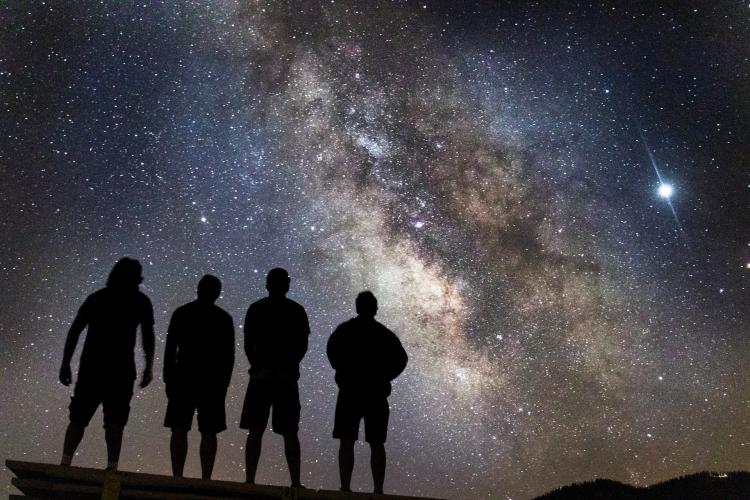
The future of space exploration is poised to take another leap forward in Flagstaff as NASA's Artemis missions prepare to land the first woman and first person of color on the moon. The groundbreaking missions are going to inspire a new generation of explorers — the Artemis Generation – many who trained right here in Flagstaff. Come along as we explore how Flagstaff delivers out-of-this-world experiences to everyone.
Flagstaff: An Astrotourism Destination that Shines Bright
Flagstaff's significance as an astrotourism destination lies in its rich astronomical heritage and its unique position as a hub for scientific collaboration and inspiration. This enchanting city, nestled amid the breathtaking landscapes of northern Arizona, holds the key to unlocking the mysteries of the cosmos.
It was here, in 1930, that the brilliant minds at Lowell Observatory first laid eyes on Pluto, forever changing our understanding of the solar system. But Flagstaff's allure extends far beyond its astronomical legacy. This remarkable region has gone above and beyond to preserve the purity of its night skies, earning it the prestigious title of the world's first International Dark Sky City.
In a world filled with light pollution, Flagstaff's commitment to darkness creates a canvas where the stars truly shine. Prepare to be dazzled as the Milky Way stretches across the heavens, revealing a mesmerizing tapestry of cosmic beauty.

Helping Astronauts Reach for the Stars
Flagstaff's significance as a training ground for astronauts can be traced back to the 1960s. Journey back to the Apollo era, when legendary astronauts like Neil Armstrong and Buzz Aldrin used Flagstaff's unique geological features and otherworldly landscapes to prepare these trailblazing explorers for their historic moon landing.
Since 1963, trainees have come through Flagstaff to study the earth's structures through geology, emphasizing its importance in preparing future space explorers. Today, every astronaut goes through two years of intensive training in Flagstaff before being assigned a mission to fly.
Geology training plays a vital role in astronaut preparation. Initially focused on observations from the International Space Station, geology training has expanded to involve astronauts in designing next-generation spacesuits, tools, and equipment. And with the Artemis program's goal of returning humans to the moon, geology training has gained even more significance.
Flagstaff's geological analog sites allow astronauts to simulate lunar and Martian landscapes. The volcanic terrain closely resembles the lava fields found on the moon, making it an ideal training ground for lunar exploration. Places such as Meteor Crater, Grand Canyon, Sunset Crater, the Bonita Lava Flow, and S P Crater located approximately 25 miles of Flagstaff provide astronauts with valuable hands-on experience in navigation, geology, and communication.
Enter the Realm of The Desert RATS of NASA
Brace yourself for an adrenaline-fueled adventure as you explore northern Arizona's otherworldly terrain. The Black Point Lava Flow located approximately 34 miles from Flagstaff, is the primary site for NASA's Desert Research and Technology Studies (Desert RATS). This vast and desolate environment closely resembles the terrain and environmental conditions of the Moon, Mars, and Near-Earth Asteroids (NEAs).
The rugged landscapes, dust storms, extreme temperatures, deep craters, steep slopes, and volcanic ash fields offer an ideal setting for surface system analog field tests. It’s here that astronauts complete day-long scenarios and long-duration traverse operations in support of the Desert RATS tests and demonstrations.
These cutting-edge experiments and training activities immerse astronauts and scientists in the challenges of planetary exploration. From testing equipment and spacesuits to exploring remote communication protocols and astrogeology, Desert RATS mimics the harsh conditions of extraterrestrial missions. The "build a little, test a little" approach they use paves the way for iterative improvements and ensures that exploration systems meet the demands of future manned missions.
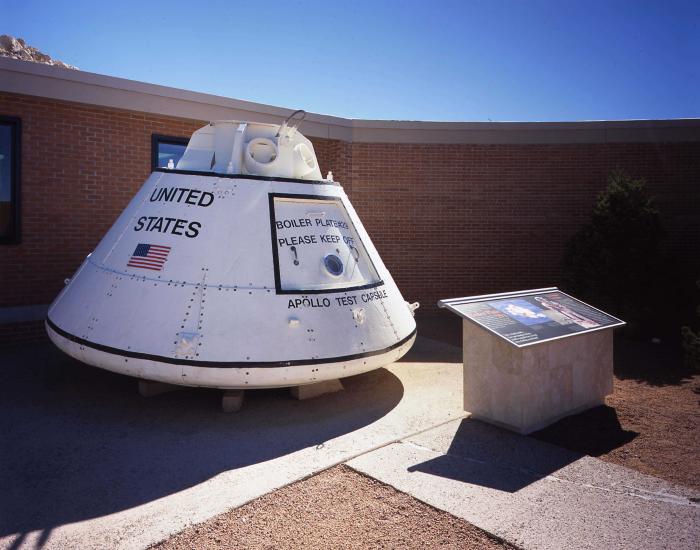
Walk in the Footsteps of Astronauts
Blast off into the world of NASA astronaut training at the Meteor Crater & Barringer Space Museum! This is the very spot where astronauts prepared for the monumental Apollo moon landing back in the swinging 60s. Step back in time and experience the simulated conditions they faced in space for yourself.
Marvel at the awe-inspiring and mind blowing Apollo 11 space capsule on display outside the Discovery Center. This is where legends like Neil Armstrong, Buzz Aldrin, and Michael Collins geared up for their historic lunar mission. You'll feel like you're slipping into their moon boots as you get a glimpse into the training and preparations that preceded their epic voyage to the moon. Can you imagine what it was like for them? Now's your chance to find out!
But that's not all — get ready to have your senses rocked by the incredible feature film "IMPACT! The Mystery of Meteor Crater." This mind-bending movie will transport you to the founding of Meteor Crater and reveal the mind-boggling impact the meteor had on the land. And hey, don't forget to check out the exhibits on the Siberian Explosion of 1908 and lunar craters. It's a crash course in cosmic history!
Now, it's time to venture outside and witness the sheer magnificence of the Meteor Crater up close and personal. Stand on the edge of the rim, where the south crater wall rises dramatically before you, revealing sandstone and limestone beds that were uplifted by the meteor's colossal impact. Soak in the breathtaking views from the observation decks that'll leave you starstruck and craving more.
Before you head back to Earth, don't forget to stop by the Souvenir Gift & Mineral Shop. It's a treasure trove of keepsakes that'll make your journey to Meteor Crater and Barringer Space Museum unforgettable. From cool t-shirts and hats to mind-expanding books and space-based games, you're bound to find the perfect mementos to commemorate your epic adventure.
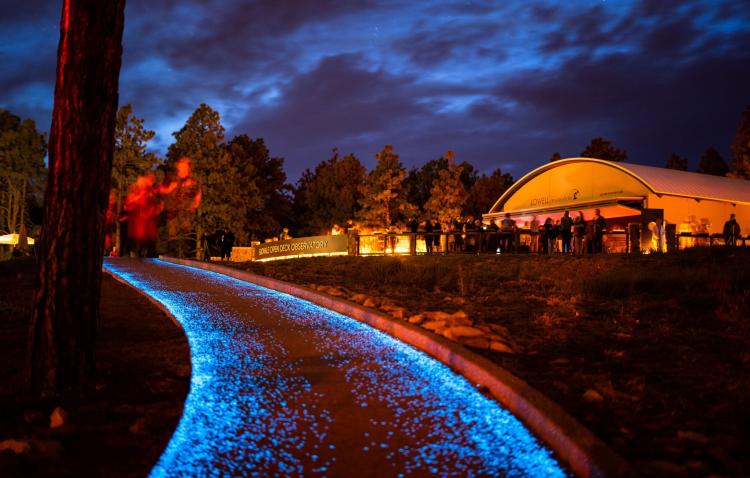
More Astrotourism in 2024 at Lowell Observatory in Flagstaff
The Lowell Observatory has been igniting the curiosity of co-discoverers since way back in 1894 when Arizona was still wild. The observatory’s visionary founder Percival Lowell believed that science is best shared with everyone — after all, who doesn't want to be a co-discoverer of the cosmos?
Since its inception, the Lowell Observatory has been a hub of cutting-edge research, captivating outreach, and mind-blowing education programs that inspire people to reach for the stars. And with the boom in astrotourism, the observatory is ready to expand and take the adventure to astronomical heights!
The First stop on the cosmic tour is the first expansion project — the Giovale Open Deck Observatory. With just a push of a button, you can access six telescopes that reveal celestial wonders beyond your wildest dreams. Say goodbye to faint smudges of light and get ready to dive into rich star fields, colorful planets, and awe-inspiring nebulae and galaxies. Flagstaff's legendary dark skies are chock-full of celestial treasures, and you're about to witness them up close and personal.
During the day, the Giovale Open Deck Observatory features fascinating exhibits that shed light on the science of spectroscopy, the types of telescopes astronomers use, and how we can preserve those dark skies in Arizona and beyond. And don't forget the six plinths surrounding the observing plaza—they align perfectly with the locations of the Sun during those epic moments of sunrise and sunset on the equinoxes and solstices. Talk about an astronomical alignment!
Fasten your seatbelts because in 2024, the Lowell Observatory is launching the Kemper and Ethel Marley Foundation Astronomy Discovery Center (ADC). This state-of-the-art facility aims to be the ultimate public astronomy destination in the whole wide universe with the Universe Theater, a mind-blowing space where live presenters will guide you on an extraordinary journey through the cosmos. With a two-story, 165-degree main screen and a 30-foot overhead screen, you'll feel like you're floating amidst the wonders of space, uncovering the mysteries and beauty of the universe. It's like a front-row seat to the greatest show in the galaxy!
And hold onto your space helmets because the ADC has an incredible addition — the Dark Sky Planetarium. Positioned at the very top of the center, this natural dome creates the perfect celestial playground for stargazing and cosmic exploration.
The Curiosity Zone is designed especially for little space enthusiasts. Here, they can unleash their inner rocket scientist with hands-on experiments, including a rocket-launching station. The Diverse Universe Exhibit will inspire children by sharing their unique life stories, celebrating their diverse backgrounds, and showcasing the challenges they've overcome. This exhibit aims to empower kids to see themselves as future scientists, igniting their curiosity, and encouraging them to explore and discover the wonders of the universe.
Explore Astrotourism in Flagstaff
Pack your sense of wonder and get ready for an astrotourism experience that will leave you starstruck and hungry for more cosmic adventures. Get ready to reach for the stars and join the ranks of co-discoverers in the ever-expanding universe of knowledge!
About the Author
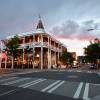
Discover Flagstaff
Send An EmailDiscover Flagstaff features travel information for visitors to Flagstaff, Arizona and regional attractions like the Grand Canyon, Sedona, Navajo Nation and Route 66.

